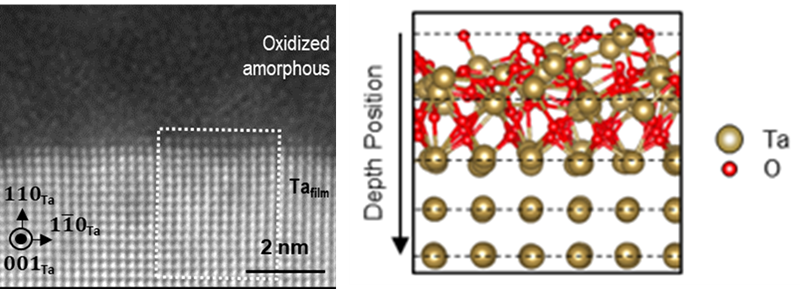U.S. scientists and collaborators have a powerful new instrument at their disposal—the world’s first exascale supercomputer. The international Top500 list of most powerful systems in the world named the Department of Energy (DOE) Office of Science system Frontier the world’s fastest supercomputer. Frontier broke the exascale limit, reaching 1.1 exaflops of performance on the High-Performance Linpack benchmark. Exascale performance is measured by calculations faster than 1018 floating point operations per second (flops), or a quintillion calculations per second.
Located at DOE’s Oak Ridge National Laboratory, Frontier is a collaboration between DOE and U.S. technology companies HPE and AMD. This milestone marks the beginning of the long-awaited exascale era, following more than 10 years of research and development by the nation’s brightest minds—not only for Frontier but other upcoming DOE exascale systems.
Exascale systems will provide the next-generation of computing desperately needed for the massive number crunching required for climate change research and prediction, materials design for energy technologies and fusion reactors, a stronger and more adaptive power grid, the data-driven design of new COVID treatments, rapid data analysis for scientific facilities such as light sources, and many other challenges in energy, environment, and national security.
As Associate Director of the DOE Office of Science’s Advanced Scientific Computing Research program, I lead programs and facilities that accelerate scientific research with top-notch computing resources. Computing has become an integral part of scientific research and each year the demand for our computing resources grows. Scientists and researchers, including those in industry, urgently request greater access to our nation’s most powerful supercomputers because they can accomplish so much with these elite resources. These scientists represent many different disciplines and using these resources for their research will accelerate scientific discovery ensuring economic prosperity and national security.
For decades, DOE partnerships with vendors have continued to deploy more powerful computers to benefit society. But leading up to exascale, we faced new and sizeable challenges. Traditional computing was approaching technical limits and delivering exascale capabilities would need new technologies to be successful. Based on experience with previous supercomputers, scientists feared that exascale supercomputers would require even more energy than the energy-intensive supercomputers already in use—up to 60 times more.
But our scientists and engineers were up to the challenge. Frontier takes advantage of the next-generation of accelerated, hybrid CPU–GPU processing developed specifically for exascale work. And Frontier represents a 200 times reduction in energy per flop compared with Jaguar, the nation’s first petaflop system deployed in 2009.
Following Frontier, a second Office of Science system expected to top 2 exaflops, Aurora, will premiere in late 2022 at DOE’s Argonne National Laboratory. The National Nuclear Security Administration (NNSA) will deploy El Capitan, its own exascale system at Lawrence Livermore National Laboratory, in the following years. This constellation of DOE exascale systems is a result of the Department’s seven-year Exascale Computing Initiative (ECI), co-led by the Office of Science and the NNSA. Through ECI, we adopted a “co-design” approach to collaboratively develop the hardware, applications, software, and system environments—an exascale ecosystem.
Involving hundreds of scientists, dozens of industry partners, and many of our DOE national laboratories, the Exascale Computing Project, a component of ECI, is a stunning example of how groups of scientists, applied mathematicians, and computer scientists from across the nation can surmount tremendous challenges and plan and deliver extraordinary missions together on time and within budget.
New, more complex computers like Frontier, Aurora, and El Capitan are needed to unleash the power of artificial intelligence (AI) and machine learning and wrangle the knowledge hidden in the explosion of data that we are seeing in every field of research. And we are competing in an increasingly digital world where other nations are also investing heavily in science and technology.
Based on the High-Performance Linpack-Accelerator Introspection benchmark, Frontier has about seven “exaops” of AI performance, which requires less mathematical precision to reach exascale-level computation than traditional flops for modeling and simulation. In this way, Frontier can not only solve big data and machine learning problems but can couple AI with modeling and simulation to accelerate virtually all scientific problems.
Importantly, the many scientists who enabled exascale will use this exascale capability to advance their research and train the next generation. The computing tools they develop will improve computing at all scales. The science they produce will provide valuable insight to their broader fields with applications in industry sectors like energy and transportation.
Exascale is a resource not just for DOE researchers but for the nation. We’re proud to steward this capability and are ready to deliver the transformative science it will produce.
The Office of Science is the single largest supporter of basic research in the physical sciences in the United States and is working to address some of the most pressing challenges of our time. For more information please visit the Office of Science website.
Author Credit: Barb Helland is the DOE Office of Science’s Associate Director for Advanced Scientific Computing Research.
sourced from https://www.sourcearu.com



